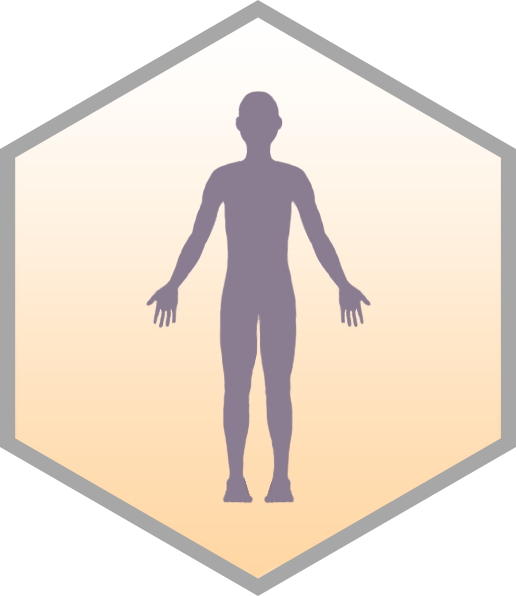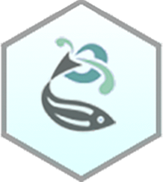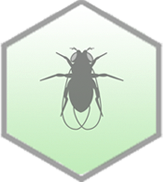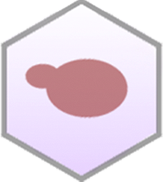SIS2 / YKR072C Overview
- Standard Name
- SIS2 1
- Systematic Name
- YKR072C
- SGD ID
- SGD:S000001780
- Aliases
- HAL3 8
- Feature Type
- ORF , Verified
- Description
- Negative regulatory subunit of protein phosphatase 1 (Ppz1p); involved in coenzyme A biosynthesis; subunit of the phosphopantothenoylcysteine decarboxylase (PPCDC: Cab3p, Sis2p, Vhs3p) complex and the CoA-Synthesizing Protein Complex (CoA-SPC: Cab2p, Cab3p, Cab4p, Cab5p, Sis2p and Vhs3p); dose-dependent regulator of replicative lifespan; SIS2 has a paralog, VHS3, that arose from the whole genome duplication 2 3 4 5 6 7
- Name Description
- SIt4 Suppressor 1
- Paralog
- VHS3 5
- Comparative Info
-







Sequence
The S. cerevisiae Reference Genome sequence is derived from laboratory strain S288C. Download DNA or protein sequence, view genomic context and coordinates. Click "Sequence Details" to view all sequence information for this locus, including that for other strains.
Analyze Sequence
S288C only
BLASTN | BLASTP | Design Primers | Restriction Fragment Map | Restriction Fragment Sizes | Six-Frame Translation
S288C vs. other species
BLASTN vs. fungi | BLASTP at NCBI | BLASTP vs. fungi
S288C vs. other strains
Protein
Basic sequence-derived (length, molecular weight, isoelectric point) and experimentally-determined (median abundance, median absolute deviation) protein information. Click "Protein Details" for further information about the protein such as half-life, abundance, domains, domains shared with other proteins, protein sequence retrieval for various strains, physico-chemical properties, protein modification sites, and external identifiers for the protein.
- Summary
- Sis2p is 562 amino acids long, of average half-life, low in abundance; contains disordered regions at both termini; C-terminus rich in Asp/Glu, including a variable run of Asp residues; phosphorylated on 31 residues
- Length (a.a.)
- 562
- Mol. Weight (Da)
- 62438.6
- Isoelectric Point
- 4.33
- Median Abundance (molecules/cell)
- 4255 +/- 932
- Half-life (hr)
- 9.0
Alleles
Curated mutant alleles for the specified gene, listed alphabetically. Click on the allele name to open the allele page. Click "SGD search" to view all alleles in search results.
View all SIS2 alleles in SGD search
Gene Ontology
GO Annotations consist of four mandatory components: a gene product, a term from one of the three Gene Ontology (GO) controlled vocabularies (Molecular Function, Biological Process, and Cellular Component), a reference, and an evidence code. SGD has manually curated and high-throughput GO Annotations, both derived from the literature, as well as computational, or predicted, annotations. Click "Gene Ontology Details" to view all GO information and evidence for this locus as well as biological processes it shares with other genes.
- Summary
- Subunit of the phosphopantothenoylcysteine decarboxylase complex; involved in coenzyme A biosynthesis, regulation of the mitotic cell cycle, and response to salt stress
View computational annotations
Molecular Function
- Manually Curated
- contributes to phosphopantothenoylcysteine decarboxylase activity (IMP, IDA)
- enables protein serine/threonine phosphatase inhibitor activity (IDA)
Biological Process
- Manually Curated
- involved in coenzyme A biosynthetic process (IGI)
- involved in regulation of mitotic cell cycle (IGI)
- involved in response to salt stress (IMP)
Cellular Component
- Manually Curated
- located in chromatin (IDA)
- part of CoA-synthesizing protein complex (IDA)
- located in nucleus (IDA)
- part of phosphopantothenoylcysteine decarboxylase complex (IDA)
Complex
Macromolecular complex annotations are imported from the Complex Portal. These annotations have been derived from physical molecular interaction evidence extracted from the literature and cross-referenced in the entry, or by curator inference from information on homologs in closely related species or by inference from scientific background.
Pathways
Phenotype
Phenotype annotations for a gene are curated single mutant phenotypes that require an observable (e.g., "cell shape"), a qualifier (e.g., "abnormal"), a mutant type (e.g., null), strain background, and a reference. In addition, annotations are classified as classical genetics or high-throughput (e.g., large scale survey, systematic mutation set). Whenever possible, allele information and additional details are provided. Click "Phenotype Details" to view all phenotype annotations and evidence for this locus as well as phenotypes it shares with other genes.
- Summary
- SIS2/YKR072C is a non-essential gene; null mutants are viable, slow-growing, and associated with several phenotypes that significantly impact cellular functions and overall fitness. In null mutants, anaerobic growth is decreased, indicating a compromised ability to thrive in low-oxygen environments. These mutants also exhibit a reduced chronological lifespan and diminished competitive fitness, which can hinder their survival in resource-limited conditions. The morphology of the endoplasmic reticulum is abnormal, suggesting disruptions in protein processing and cellular organization. Additionally, resistance to hyperosmotic stress, ionic stress, and oxidative stress is decreased, highlighting their vulnerability to various environmental challenges. Innate thermotolerance is increased and replicative lifespan is also increased. However, resistance to starvation is decreased, and vacuolar morphology is abnormal, which may disrupt cellular storage and waste management. Reduced function mutants grow slowly. Overexpression also causes slow growth and leads to decreased replicative lifespan, indicating that excessive levels of the gene product may be detrimental to cellular health.
Classical Genetics
- null
- overexpression
- reduction of function
- null
- anaerobic growth: decreased
- chemical compound accumulation: abnormal
- chemical compound accumulation: decreased
- chronological lifespan: decreased
- competitive fitness: decreased
- endoplasmic reticulum morphology: abnormal
- haploinsufficient
- hyperosmotic stress resistance: decreased
- innate thermotolerance: increased
- metal resistance: decreased
- replicative lifespan: increased
- resistance to chemicals: decreased
- resistance to chemicals: increased
- starvation resistance: decreased
- vacuolar morphology: abnormal
- vegetative growth: decreased rate
- viable
- overexpression
Large-scale Survey
Disease
Disease Annotations consist of three mandatory components: a gene product, a term from the Disease Ontology (DO) controlled vocabulary and an evidence code. SGD provides manually curated DO Annotations derived from the literature. Click "Disease Details" to view all Disease information and evidence for this locus as well as diseases it shares with other genes.
- Summary
- Yeast SIS2 is homologous to human PPCDC and has been used to study autosomal recessive dilated cardiomyopathy
Manually Curated
Interaction
Interaction annotations are curated by BioGRID and include physical or genetic interactions observed between at least two genes. An interaction annotation is composed of the interaction type, name of the interactor, assay type (e.g., Two-Hybrid), annotation type (e.g., manual or high-throughput), and a reference, as well as other experimental details. Click "Interaction Details" to view all interaction annotations and evidence for this locus, including an interaction visualization.
- Summary
- Sis2p interacts physically with proteins involved in translation regulation; SIS2 interacts genetically with genes involved in mitotic cell cycle; the sis2 null mutant is viable, the null mutant of paralog vhs3 is viable, the sis2 vhs3 double mutant is inviable
366 total interactions for 253 unique genes
Physical Interactions
- Affinity Capture-MS: 22
- Affinity Capture-RNA: 5
- Affinity Capture-Western: 2
- Biochemical Activity: 2
- Co-localization: 2
- PCA: 8
- Reconstituted Complex: 13
- Two-hybrid: 1
Genetic Interactions
- Dosage Growth Defect: 10
- Dosage Lethality: 3
- Dosage Rescue: 36
- Negative Genetic: 185
- Phenotypic Enhancement: 1
- Phenotypic Suppression: 9
- Positive Genetic: 27
- Synthetic Growth Defect: 23
- Synthetic Lethality: 13
- Synthetic Rescue: 4
Regulation
The number of putative Regulators (genes that regulate it) and Targets (genes it regulates) for the given locus, based on experimental evidence. This evidence includes data generated through high-throughput techniques. Click "Regulation Details" to view all regulation annotations, shared GO enrichment among regulation Targets, and a regulator/target diagram for the locus.
- Regulators
- 9
- Targets
- 0
Expression
Expression data are derived from records contained in the Gene Expression Omnibus (GEO), and are first log2 transformed and normalized. Referenced datasets may contain one or more condition(s), and as a result there may be a greater number of conditions than datasets represented in a single clickable histogram bar. The histogram division at 0.0 separates the down-regulated (green) conditions and datasets from those that are up-regulated (red). Click "Expression Details" to view all expression annotations and details for this locus, including a visualization of genes that share a similar expression pattern.
Summary Paragraph
A summary of the locus, written by SGD Biocurators following a thorough review of the literature. Links to gene names and curated GO terms are included within the Summary Paragraphs.
Last Updated: 2025-04-15
Literature
All manually curated literature for the specified gene, organized into topics according to their relevance to the gene (Primary Literature, Additional Literature, or Review). Click "Literature Details" to view all literature information for this locus, including shared literature between genes.